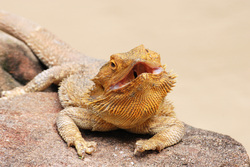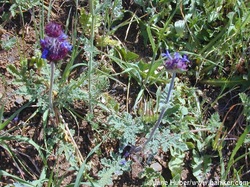Animals
Like the plants of the deserts, animals have to be strong and adapted. Food is scarce and there are many dangerous animals that they will encounter along the way. See examples below:
Mammals
· Bactrian Camel
This two-hump camel is a staple of desert wildlife. Adaptations ranging from long eyelashes to prevent sand from reaching the eye, to 2 big humps that contains fat in order to take energy from on long desert walks, their bodies are perfectly constructed for arid climates.
Where it is found: You will find it in the Gobi desert that stretches across China and Mongolia.
Reptiles
· Inland Bearded Dragon
Like the camel, this reptile is quickly becoming a staple to desert life. So much in fact, that many people keep the bearded dragon as pets.
Where it is found: You will find this cold-blooded creature scurrying around in the Australian outback.
Only the most hard-nosed, toughest, and most adapted flora and fauna can survive and thrive in an arid climate. As a result of this, the number of living species that make their habitat in an arid climate is limited. However, it is extremely interesting to study the unique plants and animals that reside in this climate due to the fact that conditions are extreme.
Plants
Believe it or not, there are plants that reside in even the world’s most extreme deserts. Most desert plants are categorized in in the following categories: cactus, grasses, shrubs, trees, and wildflowers See examples below:
Cactus
· Desert Christmas Cactus
The desert christmas tree cactus isn’t the ordinary stereotypical cactus you might have seen in your favorite western movies. In fact, this cactus gets its name from its unique appearance. It’s as if the red parts on the cactus are the Christmas ornaments you would put on the Christmas tree in December.
Where it is found: This is purely an American plant. It can be found in the deserts of western Arizona, some parts of New Mexico, and also parts of Texas.
Wildflowers
· Chia
With a fun name like “Chia” you’d expect it to be a fun-looking plant, and it definitely is. While fun looking, you would not want to touch it. I’m guessing animals wouldn’t want to touch it either. This is exactly why it is able to survive in the desert.
Where it is found: Like the desert Christmas tree cactus, this is an American plant. It can be found in the Mojave deserts of southern California, Nevada, lower part of Utah, and southern Arizona and Mexico.
Grasses
· Eragrostis
It may only be grass, but this plant is the toughest of the toughest. It is commonly referred to as “Lovegrass” by the locals.
Where it is found: This is the most predominant Saharan grass. So you’re destined to come across it.
Like the plants of the deserts, animals have to be strong and adapted. Food is scarce and there are many dangerous animals that they will encounter along the way. See examples below:
Mammals
· Bactrian Camel
This two-hump camel is a staple of desert wildlife. Adaptations ranging from long eyelashes to prevent sand from reaching the eye, to 2 big humps that contains fat in order to take energy from on long desert walks, their bodies are perfectly constructed for arid climates.
Where it is found: You will find it in the Gobi desert that stretches across China and Mongolia.
Reptiles
· Inland Bearded Dragon
Like the camel, this reptile is quickly becoming a staple to desert life. So much in fact, that many people keep the bearded dragon as pets.
Where it is found: You will find this cold-blooded creature scurrying around in the Australian outback.
Only the most hard-nosed, toughest, and most adapted flora and fauna can survive and thrive in an arid climate. As a result of this, the number of living species that make their habitat in an arid climate is limited. However, it is extremely interesting to study the unique plants and animals that reside in this climate due to the fact that conditions are extreme.
Plants
Believe it or not, there are plants that reside in even the world’s most extreme deserts. Most desert plants are categorized in in the following categories: cactus, grasses, shrubs, trees, and wildflowers See examples below:
Cactus
· Desert Christmas Cactus
The desert christmas tree cactus isn’t the ordinary stereotypical cactus you might have seen in your favorite western movies. In fact, this cactus gets its name from its unique appearance. It’s as if the red parts on the cactus are the Christmas ornaments you would put on the Christmas tree in December.
Where it is found: This is purely an American plant. It can be found in the deserts of western Arizona, some parts of New Mexico, and also parts of Texas.
Wildflowers
· Chia
With a fun name like “Chia” you’d expect it to be a fun-looking plant, and it definitely is. While fun looking, you would not want to touch it. I’m guessing animals wouldn’t want to touch it either. This is exactly why it is able to survive in the desert.
Where it is found: Like the desert Christmas tree cactus, this is an American plant. It can be found in the Mojave deserts of southern California, Nevada, lower part of Utah, and southern Arizona and Mexico.
Grasses
· Eragrostis
It may only be grass, but this plant is the toughest of the toughest. It is commonly referred to as “Lovegrass” by the locals.
Where it is found: This is the most predominant Saharan grass. So you’re destined to come across it.


